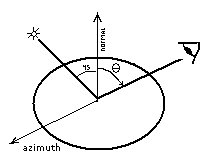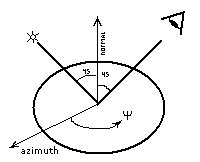| Contents Introduction Cloth Structure Explicit Cloth Model Ray Tracing Results and Images Conclusions and Future Work Acknowledgements References |
| Contents Introduction Cloth Structure Explicit Cloth Model Ray Tracing Results and Images Conclusions and Future Work Acknowledgements References |
We have created the explicit models for the real cloth samples that are artificial silk. The next step was the synthesis of BSDF for them with the aid of VGSP under the accuracy control. It is the most time consuming phase.
The calculation of 4D BSDF in full
with good accuracy can take up to tens of hours slightly depending on cloth
sample parameters. The calculation of reduced BSDF, for example 2D BSDF
for fixed incidence angles, is of course much faster. The reduced BSDFs
were computed to create the charts below.


Fig. 4(a),(b). The comparison
of measured and calculated data.
We have calculated luminance charts
for the explicit cloth model and compared them with the measurements made
for the same cloth sample, where:
 |
 |
The general conclusion is that there is not a one-to-one correspondence between measured and calculated charts but the most of the measured chart features are reflected properly. The most noticeable differences are high peaks on the plots of calculated data.
Finally we assign 4D BSDFs to the appropriate 3D models in order to perform the rendering under arbitrary light conditions and a camera setting. The resulting pictures exhibit the expected visual effects produced by the silk patterns in the form of anisotropic highlights. Images show the cloth appearance for different patterns:
| Contents Introduction Cloth Structure Explicit Cloth Model Ray Tracing Results and Images Conclusions and Future Work Acknowledgements References |
 |
|
| © Copyright 1997 Vladimir L. Volevich, Edward A. Kopylov, Andrei B. Khodulev, Olga A. Karpenko. - All Rights Reserved | [Home] |